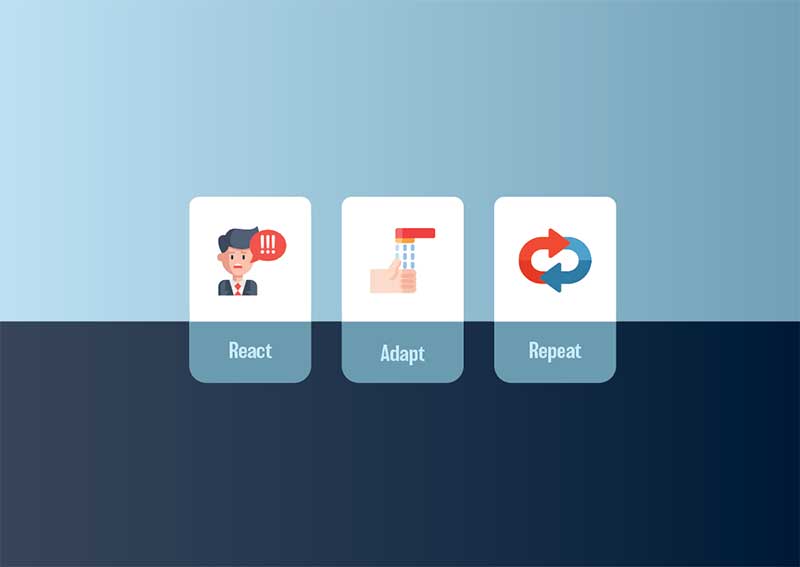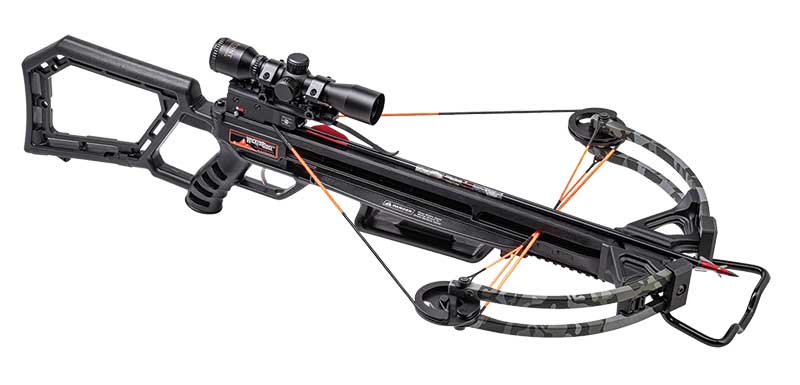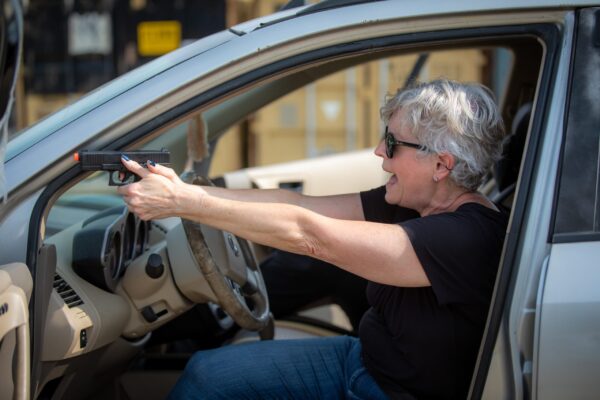Adjusting To Life
In A Pandemic
The past year-plus has brought great change to our industry. Mergers and acquisitions, unprecedented demand and the challenges created by COVID-19 all have had an impact on how we do business.
Shooting Industry asked several manufacturers and a distributor to weigh in on how they’ve adapted to the changes induced by the pandemic’s early days, and subsequent months of insatiable demand in the consumer market. In short, it’s been react, adapt, repeat.
Adapting To … Supply Chain Constraints
Kristi Hoffman, co-owner and secretary/treasurer of Black Hills Ammunition in Rapid City, S.D., said Black Hills was very busy on the commercial side of their business in 2020.
“We have a lot of DoD contracts, and those are set far in advance,” she said. “Component availability was still pretty decent in 2020, but we could see it was going to get tough.”
Since the first of this year, things have become more difficult.
“The industry as a whole has seen so many orders being placed for anything in the firearms industry,” Hoffman noted. “It put a big squeeze on the whole industry. Everything has been hit pretty hard and manufacturers just can’t keep up. I would guess the big companies that produce components are so busy trying to pump out their own ammunition it’s hard for them to service an account such as ourselves. It puts us in a bind trying to get enough components to meet our demand.”
According to Brian Flaherty, marketing manager for TenPoint Crossbows in Mogadore, Ohio, the effects of 2020 have reached beyond just the core firearms and ammunition portion of the industry. He said TenPoint entered the pandemic with strong bookings on a new product line, so they had a pipeline to fill, even though the size of the pipeline was then an unknown.
One way TenPoint coped with the increase in demand was to widen their supplier network so they had less risk of being unable to acquire needed raw materials.
“Since we’re a domestically produced product in a category where our competitors are primarily importers, we’ve been able to react and capitalize on the huge increase in demand,” Flaherty said. “Domestic production also allows us to be nimble and reduces our risk, as we are never in a position where we have four-to-six months of inventory in production or on the water.”
Adapting To … “Nonessential” Shutdowns
Heather Pleskach is the director of marketing at Otis Technology in Lyons Falls, N.Y. She said Otis has always tried to bring new technologies and know-how in house, so the company just adapted to the new environment.
“We took on manufacturing and sourcing different forms of PPE and hand sanitizer,” she said. “It helped us at a time when stores were closed, and we were unable to be open because sending gun-cleaning kits to retailers wasn’t considered essential business. We had to do a temporary layoff, but we maintained some of our workforce to be able to fulfill our government contracts and PPE orders. This supplemented us at a time when we weren’t eligible to be open for nonessential work.”
Like everyone else, the company is seeing the consequences of raw materials shortages and the associated cost increases firsthand. This has meant a change in thinking from their typical lean “just in time” procurement to longer lead times. Otis is also experimenting with different material types that might substitute for usual resources and are more readily available.
Also based in New York, Redding Reloading was deemed nonessential and completely shut down for eight weeks in 2020, according to Executive VP Robin Sharpless.
“We didn’t have any direct law enforcement or military-type contracts, so we couldn’t be essential and stay open,” he said. “We do have a number of wholesalers we supply who then resupply military and law enforcement agencies around the world, and we now have letters from them stating we’re the sole source for the products they sell to law enforcement agencies.”
Going forward, Sharpless shared this documentation should allow the company to stay open if another general shutdown becomes necessary.
“In times like these, you see people buying what’s available, but not necessarily what they want. Because of that, there will be interest in future purchases.”
Laurie Aronson, CEO Lipsey’s
Adapting To … Remote Work
At Lipsey’s in Baton Rouge, La., CEO Laurie Lipsey Aronson said the company has always taken great pride in having the entire workforce under one roof, working in-house. Thanks to the abrupt onset of the pandemic, however, things changed rather quickly.
“Within a two-week period we were able to get laptops for everyone except our warehouse team,” Aronson recalled. “For us to be able to step out of the office and for all our admin staff to work remotely was a very big change for the culture of our business.”
Even though employees are back to working in person, they have retained the ability to work remotely.
“We know when someone says they need to work from home, they really can work from home,” Aronson added.
One byproduct of working remotely, Aronson noted, is it would be tempting for a sales rep to default to selling to top accounts only. Aronson has impressed upon her sales team to make a concerted effort to be sure they are taking as much care of the small accounts as they are the large ones.
“You would think in this climate, everyone would do well,” she said. “But if you’re a small retailer and all the distributors are only taking care of the larger ones, you don’t get any product and you go out of business. We’ve always said we want to make sure the mom-and-pop stores get taken care of so we can try to service everyone. We can’t be all things to all people, but we try to make sure we allocate across the board so we’ve got both the big guys and the small guys taken care of.”
Adapting To … The First-Time Buyer
One trend Linda Powell, director of media relations for O.F. Mossberg, has been aware of over the past year is new buyers haven’t always been able to find the firearms they want.
“Many first-time buyers are going into dealers with a specific firearm in mind, having done their homework,” she said.
“Unfortunately, with limited inventory, those buyers often purchased a gun based solely on availability. For example, the buyer may have intended to purchase a personal-defense shotgun, but if it wasn’t available, the buyer instead opted to purchase a hunting shotgun.”
Although Lipsey’s doesn’t sell directly to the end user, Aronson has observed similar trends through conversations with retailers — comparing the past year-plus to elevated demand in 2013 and 2016.
“In times like these, you see people buying what’s available, but not necessarily what they want,” she noted. “Because of that, there will be interest in future purchases. If you really wanted a GLOCK pistol but everyone was out and you ended up with a pistol from another manufacturer, you may still want to go back and get that GLOCK. Or if you ended up with a shotgun instead of a pistol for home defense, it might help with some second-time purchases because someone didn’t get what they wanted the first time.”
The sale of crossbows to first-time buyers has somewhat mirrored the sale of firearms. TenPoint’s Flaherty said the pandemic has been very interesting because it put pressure on all price points.
“Stimulus dollars not only created many more first-time buyers, but gave them more money to do so — and we saw the average spend go up,” he noted.
“I think most people are kind of like us — nobody knows what 2022 is going to bring, and everybody is as busy as they possibly can be. We’re trying to do as much as we possibly can with the components we have, but it’s a challenge for us just like it is for every other company in this industry.”
Kristi Hoffman, Co-Owner Black Hills Ammunition
Adapting To … Hunting’s Resurgence
Although the highest demand has been for handguns and shotguns for personal defense, Powell said Mossberg has seen increased demand across all product categories.
“With more people spending time at home, interest in outdoor activities — including hunting — has spiked,” she said. “The demand for hunting rifles and shotguns has surged over pre-2020 levels.”
Likewise, Aronson noted interest in hunting has jumped.
“The hunting business saw a huge increase last year because people were getting outdoors again,” she said. “I heard retailers share they wished they were more diversified beyond firearms because customers were wanting to do more outdoor activities involving apparel, backpacks, kayaks and other things that go beyond just firearms. I think the outdoors market — which includes hunting — is on the rise again.”
Prior to March 2020, demographics in the bowhunting category trended older — but that’s changed, according to Flaherty.
“Previously, we weren’t experiencing the new younger recruitment in proportion to individuals who were aging out. We’re finding now the pandemic has lowered the average age of our customer, which is fantastic for all involved in the hunting category.”
TenPoint has developed a multi-tiered strategy to capitalize on the younger consumer.
“First, we’re focusing on generating consumer content through writers and media outlets that both aid in recruiting and educating the new bowhunter,” Flaherty shared. “In addition, we wanted to eliminate the price barrier that kept individuals from owning a domestically made crossbow. Now, the Blackhawk 360 crossbow package allows new users to begin enjoying the sport with an American-built crossbow for less than $400.”
The company also has formed partnerships with companies such as Takedown Eventures, which hosts events providing a range of outdoor experiences.

One way Otis has pivoted in the wake of the pandemic is repurposing some of its resources to produce
hand sanitizer and PPE products. As a result, its “Otis Helping Hands” initiative has risen to prominence
over the past year and a half. Through this program, organizations can request donations of hand sanitizer/PPE
or gun-cleaning equipment. For more info, visit otistec.com/helpinghands.
Adapting To … An Uncertain Future
While no one could have predicted how the past 20 months played out, the manufacturers and distributors interviewed here expressed predicting what’s going to happen is an exercise in patience.
Going forward, Black Hills Ammunition is being proactive about ordering supplies they need.
“We’re trying to let our suppliers know what our needs for 2022 are going to be,” Hoffman stated. “But I think most people are kind of like us — nobody knows what 2022 is going to bring, and everybody is as busy as they possibly can be. We’re taking orders, but we have no idea when or if we can ever fill them. We’re trying to do as much as we possibly can with the components we have, but it’s a challenge for us just like it is for every other company in this industry.”
Aronson is looking ahead to possible challenges we may be facing in the next year or so and planning the best she can for them. Her first priority is finishing construction on an addition to the company’s warehouse so they can improve on fulfillment. This was a pre-COVID decision, but the events of the 20 months have underscored the need to go forward with the plan.
“We know at some point things will slow down some,” Aronson forecasted. “We don’t know when; we’re just trying to prepare for our future. We’re making sure we have the room for new equipment in our warehouse.”
Sharpless shared the reloading segment grew significantly last year, and he expects it to continue, given the current administration in the White House. Redding Reloading has planned for this contingency in 2021 and beyond by investing in more efficient equipment.
“We’ve recently added several new CNC machine centers, and they’re on the floor and running,” Sharpless said. “We’re limited on physical plant space, so if we buy a new, more efficient machine able to produce more product per square foot — we’re better off.”
How has your business adapted to the significant change experienced across the industry since March 2020? How are you planning for the future? Let the SI team know: comments@shootingindustry.com.







